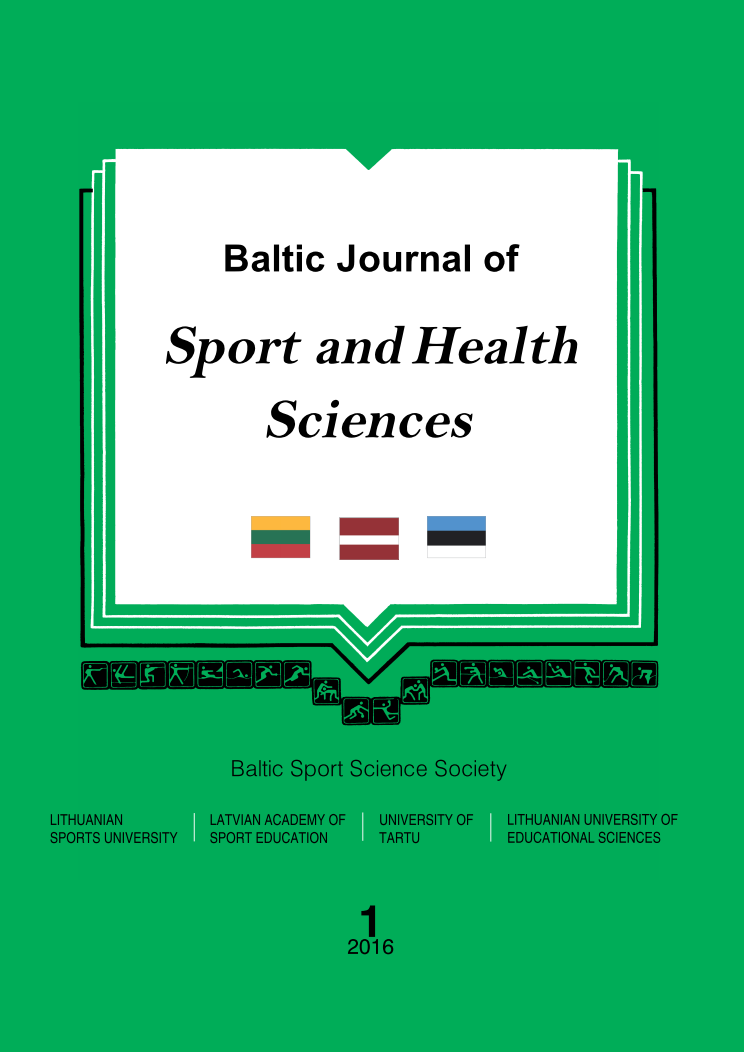Motor and Functional Abilities of U-19 Elite Croatian Soccer Players
Abstract
Background. Soccer is known as one of the most popular games in the world. Because of constant profiling and
improving, players and their conditioning abilities need to be on top level to achieve great sport results. The aim of
this study was to determine conditioning profile of junior players playing on different playing positions.
Methods. Sample of 85 junior elite soccer players (17.06 ± 0.74 years) was included in the study (height: 1.75 ±
0.05 m; weight: 73.59 ± 9.56 kg; body mass index: 23.97 ± 0.45 kg/cm 2 ). Sample of variables consisted of five motor
ability tests (standing long jump-SLJ, high jump-HJ, 30 m sprint-SP30M, 60 m sprint-SP60M, 5 x 10 m sprint-SP5 x
10M) and one functional ability test (1500 m run-R1500M). To determine significant differences among players
playing on different playing positions and to establish where those differences were, one-way ANOVA with Scheffe
post-hoc test were used. For better understanding, which tests distinguish each position the most, discriminant
analysis was performed.
Results. Results showed that the sample which consisted of five groups (defenders, goalkeepers, attackers,
stoppers and midfielders), significantly differed in variable SLJ (p = .00). Scheffe post-hoc test significant differences
between defenders and goalkeepers (p = .01), goalkeepers and stoppers (p = .00) and goalkeepers and midfielders
(p = .01).
Conclusions. Results clearly represented homogenous collective, where players, no matter which position they
were, had similar values in obtained tests. The explanation of obtained results could be found in similar preparedness
and great sports form, which must be on optimal level for best performance.
Keywords: motor abilities, functional abilities, preparedness.
Downloads
Published
Issue
Section
License
Copyright (c) 2018 Baltic Journal of Sport and Health Sciences

This work is licensed under a Creative Commons Attribution 4.0 International License.






